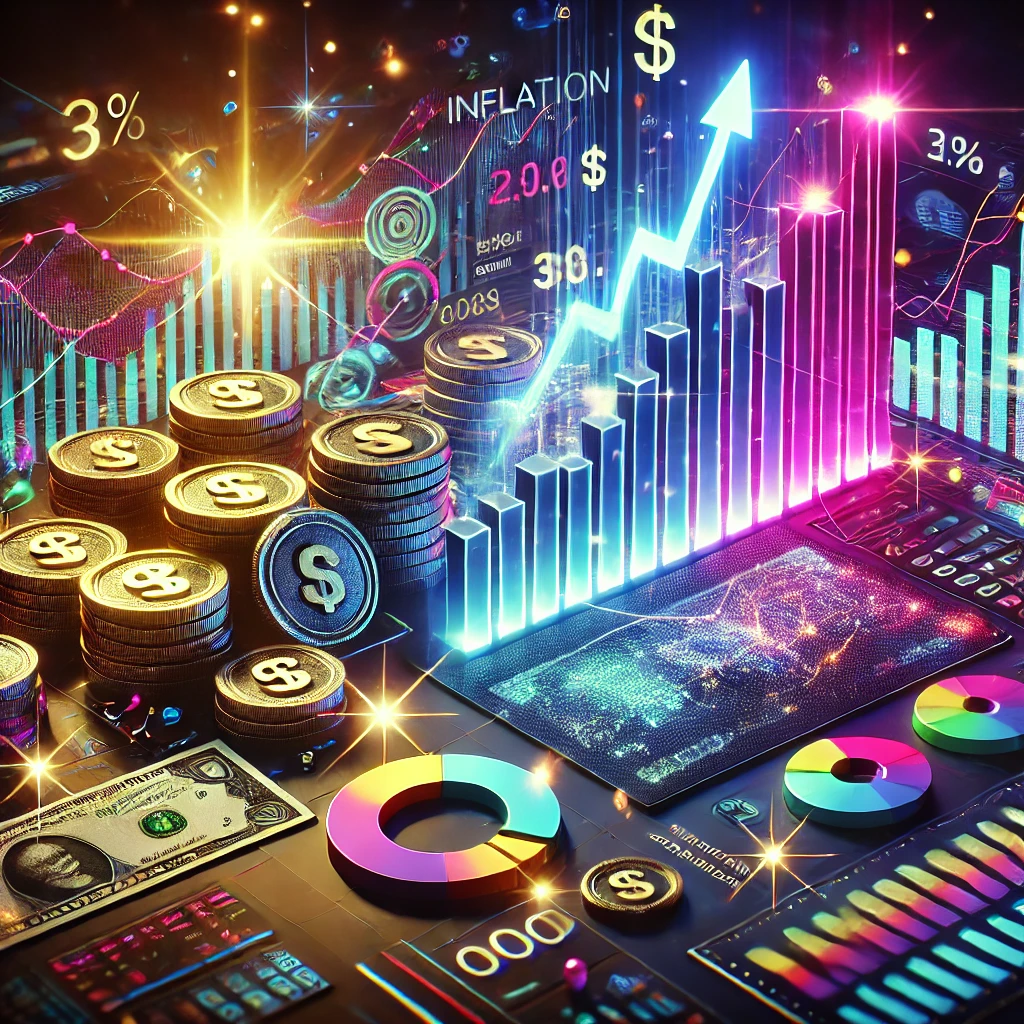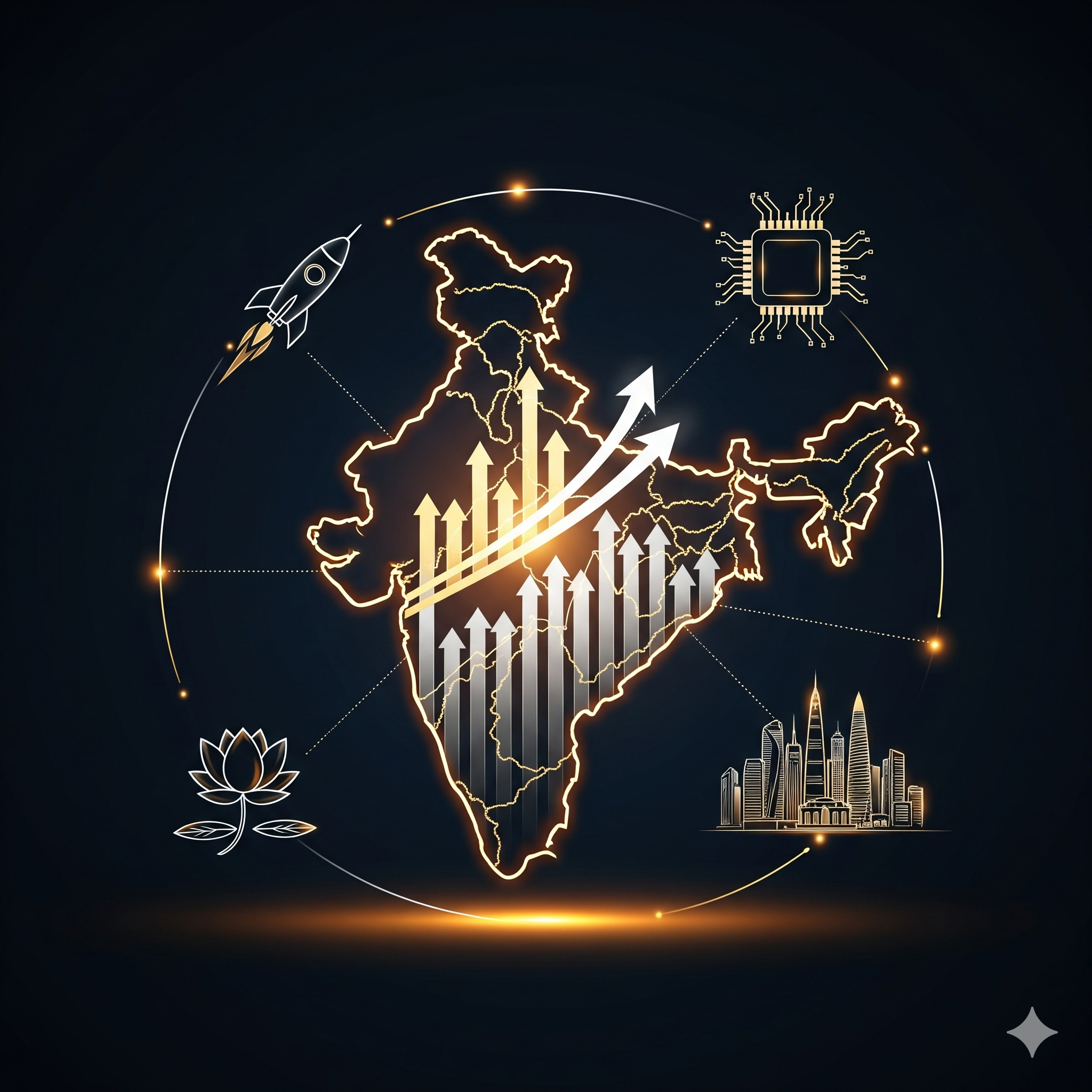Inflation is one of the most critical macroeconomic challenges affecting India’s economy. It refers to the sustained increase in the general price level of goods and services over time. While moderate inflation is considered beneficial for economic growth, high and persistent inflation erodes purchasing power, increases the cost of living, and creates financial instability. In recent years, India has experienced inflationary pressures due to multiple factors, including global supply chain disruptions, rising crude oil prices, food inflation, and fiscal policy changes.
This article examines the impact of inflation on the Indian economy, the role of monetary and fiscal policies in controlling it, and the measures taken by the government and the Reserve Bank of India (RBI) to maintain economic stability.
Impact of Inflation on the Indian Economy
1. Decline in Purchasing Power
One of the most direct impacts of inflation is the erosion of purchasing power. As prices rise, consumers are able to buy fewer goods and services with the same amount of money. This particularly affects low- and middle-income households, reducing their ability to meet daily expenses and lowering overall living standards.
2. Rising Cost of Living
Inflation leads to an increase in the cost of essential commodities such as food, fuel, and housing. The Consumer Price Index (CPI), which measures retail inflation, has shown persistent increases in food and fuel prices in recent years. High inflation in these sectors disproportionately impacts poor and vulnerable sections of society, making it harder for them to afford basic necessities.
3. Interest Rate Volatility
Inflation affects interest rates, as central banks, including the RBI, use monetary policy tools to curb inflationary pressures. When inflation rises, the RBI increases the repo rate to tighten liquidity, making borrowing costlier for businesses and individuals. Higher interest rates impact investments and economic growth, leading to a slowdown in industrial activity.
4. Reduced Investment and Business Growth
High inflation creates uncertainty in the economy, discouraging businesses from making long-term investment decisions. Increased production costs, due to rising raw material and labor prices, lower profit margins and slow down industrial expansion. This also affects job creation and economic growth.
5. Impact on Exports and Trade Balance
Persistent inflation can make Indian goods more expensive in global markets, reducing export competitiveness. This leads to a widening trade deficit, as imports become more attractive than domestic products. A higher trade deficit puts pressure on the Indian rupee, leading to currency depreciation and further inflationary pressures due to increased import costs.
6. Social and Political Consequences
Inflation has significant social and political implications. High food and fuel prices often lead to public discontent, protests, and political instability. Inflationary pressures can also force governments to increase subsidies, putting additional pressure on public finances and fiscal deficits.
Factors Contributing to Inflation in India
Several factors have contributed to inflationary trends in the Indian economy in recent years:
1. Supply Chain Disruptions
Global supply chain disruptions due to the COVID-19 pandemic, geopolitical tensions, and trade restrictions have led to shortages of essential goods and commodities. These supply-side constraints have driven up prices, leading to inflationary pressures.
2. Rising Crude Oil Prices
India is heavily dependent on crude oil imports, and fluctuations in global oil prices significantly impact domestic inflation. Rising crude oil prices increase transportation costs, which, in turn, raise the prices of goods and services.
3. Food Inflation
Agricultural production is affected by weather conditions, supply chain inefficiencies, and input costs. Fluctuations in food production, due to erratic monsoons or climate change, lead to sharp increases in food prices, contributing to overall inflation.
4. Monetary Expansion
Excess liquidity in the financial system, due to accommodative monetary policies, can lead to demand-driven inflation. If money supply growth outpaces economic growth, it results in higher demand for goods and services, pushing up prices.
5. Fiscal Policies and Public Spending
Increased government spending, particularly during economic crises, can contribute to inflation. While stimulus packages and welfare programs are necessary to boost economic recovery, excessive spending without corresponding revenue generation can lead to inflationary pressures.
Role of Monetary and Fiscal Policies in Controlling Inflation
To control inflation and ensure economic stability, both monetary and fiscal policies play a crucial role.
Monetary Policy Measures by the RBI
The RBI, as India’s central bank, is responsible for maintaining price stability while supporting economic growth. It uses various monetary policy tools to control inflation:
1. Repo Rate Adjustments
The repo rate is the rate at which commercial banks borrow money from the RBI. By increasing the repo rate, the RBI makes borrowing costlier, reducing liquidity in the market and controlling inflation. In recent years, the RBI has raised the repo rate multiple times to curb rising inflation.
2. Cash Reserve Ratio (CRR) and Statutory Liquidity Ratio (SLR)
The RBI can increase the CRR (the percentage of deposits banks must hold with the RBI) and the SLR (the percentage of net demand and time liabilities banks must invest in government securities) to reduce the money supply in the economy and control inflation.
3. Open Market Operations (OMO)
Through OMO, the RBI buys or sells government securities in the open market to regulate liquidity. Selling securities absorbs excess money from the system, reducing inflationary pressures.
4. Inflation Targeting Framework
The RBI follows an inflation-targeting framework, with a target CPI inflation rate of 4% (±2%). This helps in maintaining stable price levels while ensuring economic growth.
5. Liquidity Adjustment Facility (LAF)
Under LAF, the RBI provides or absorbs liquidity from the banking system based on inflationary trends. This helps in managing short-term fluctuations in inflation.
Fiscal Policy Measures by the Government
The government, through its fiscal policy, also plays a critical role in controlling inflation:
1. Rationalizing Public Expenditure
Reducing unnecessary public spending helps control excess demand in the economy. The government has taken steps to cut non-essential expenditures while maintaining welfare schemes.
2. Subsidy Management
Reducing subsidies on fuel and essential commodities helps in controlling fiscal deficits and inflation. However, subsidies must be managed carefully to ensure that vulnerable sections of society are not adversely affected.
3. Taxation Policies
Adjusting tax rates on essential commodities can help control inflation. For instance, the government has reduced excise duties on fuel and food products in times of high inflation to ease price pressures.
4. Supply-Side Reforms
Improving supply chain efficiency, increasing agricultural productivity, and investing in infrastructure development help reduce supply bottlenecks, thereby controlling inflation.
5. Import and Export Policies
Adjusting import duties and trade policies to stabilize supply and demand dynamics can help control inflation. For example, the government sometimes reduces import duties on essential goods to stabilize domestic prices.
Recent Measures Taken to Control Inflation
- RBI’s Interest Rate Hikes: The RBI has raised repo rates multiple times since 2022 to tighten liquidity and control inflation.
- Fuel Price Adjustments: The government reduced excise duties on petrol and diesel to control transportation costs.
- Food Price Stabilization: Measures such as buffer stock management and price controls on essential food items were implemented.
- Supply Chain Improvements: Investments in logistics and cold storage facilities were increased to reduce food wastage and price volatility.
- Subsidy Rationalization: Reduction in non-essential subsidies while ensuring targeted benefits to low-income groups.
Conclusion
Inflation remains a major challenge for the Indian economy, affecting purchasing power, business growth, and overall economic stability. While global factors such as supply chain disruptions and oil price fluctuations contribute to inflationary pressures, domestic fiscal and monetary policies play a crucial role in managing them. The RBI’s monetary policies, such as repo rate hikes and liquidity control measures, along with the government’s fiscal policies, including taxation, subsidies, and public spending adjustments, are essential in containing inflation. A balanced and proactive approach is necessary to ensure long-term price stability and sustainable economic growth in India.




